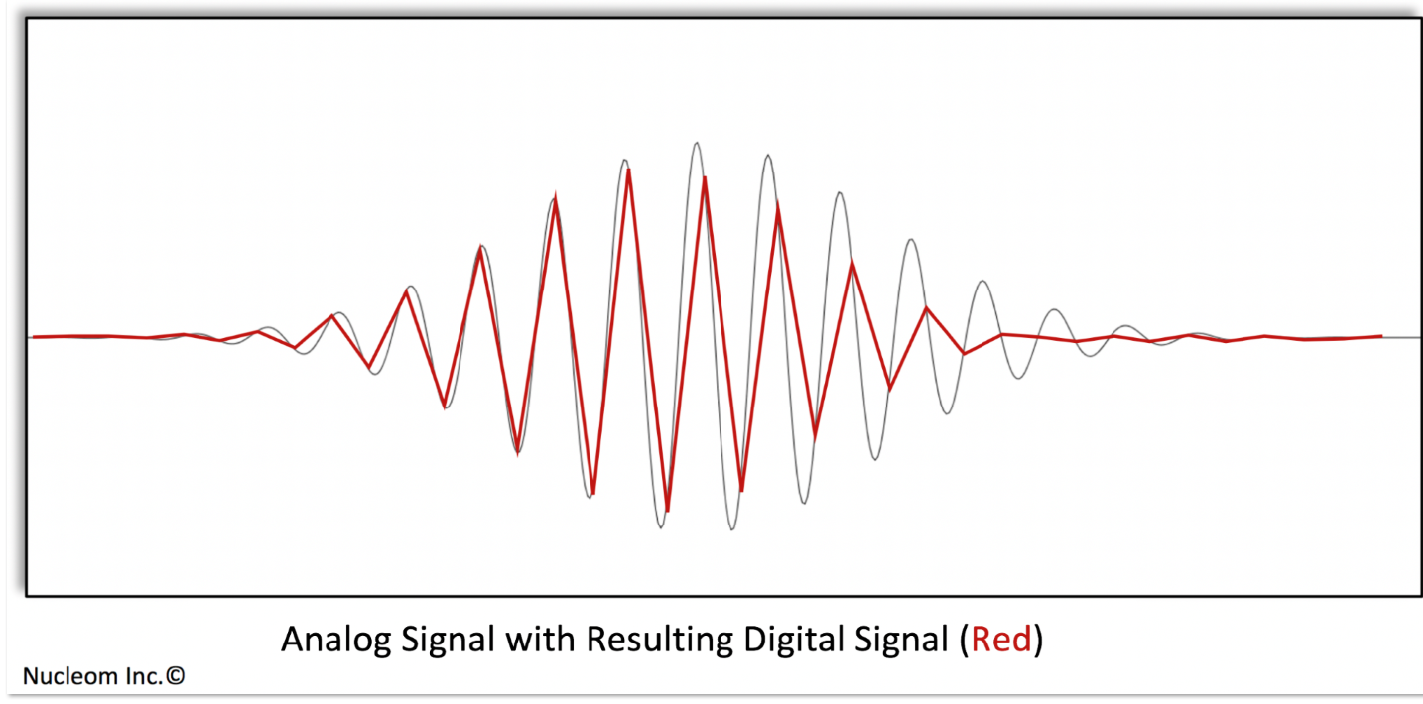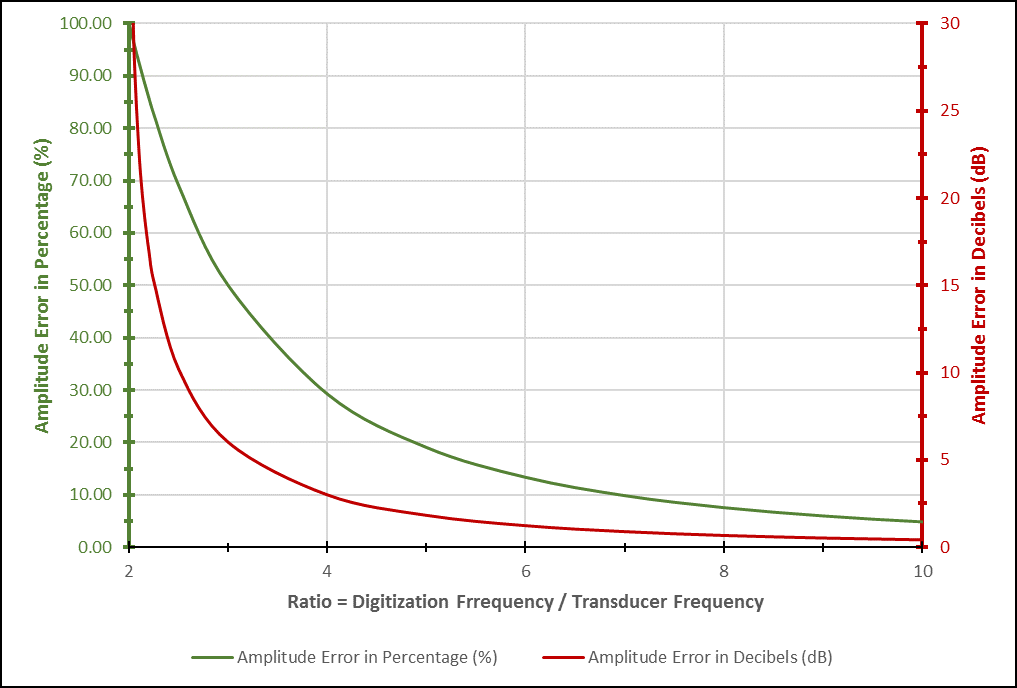What is Signal Digitization?
An analogue signal is the true representation of a signal. However, it is impossible to save a full waveform of an analogue signal without signal digitization. It would require storing an infinite quantity information (positions and amplitudes) to define the signal.
Digitization is the creation of digital signals from analogue originals by means of dedicated electronic systems. Modern instrumentation uses this process to show signals on their live displays and store data. Digitization parameters are essential variables that affect NDE detection and measurements. There is a delicate balance between the digitizer, the inspection efficiency, data quality and reliability.
How does signal digitization work?
An analogue/digital converter lays an equally spaced vertical grid and records the signal amplitude at each intersection. The data acquisition unit them connects the points for the data display.

The resulting digital signal is “more or less” accurate as a function of the digitizer grid.

The distance between the grid lines is based on the digitizer frequency. Depending on the instrument, this parameter is user-defined.
But how to define signal digitization?

It comes down to the amplitude error; i.e. delta between analogue and digital amplitude. The maximum error will occur when an analogue signal peak falls between two (2) digitization grid lines; i.e. in the middle. This error can be evaluated as a function of the ratio between the digitizer and the transducer frequencies.
 This amplitude error can also impact vertical linearity and amplitude control verifications of an ultrasonic unit. Therefore, the amplitude error must be minimized to allow linearity verifications to be within accepted tolerances. It is generally recognized that a maximum error to be within 5% for an unrectified signal is acceptable. Therefore, digitization frequency should be at least 10x to 12x the transducer frequency. Since typical ultrasonic inspection application used 2,25 MHz to 10 MHz probes, the default digitization frequency value is often 100 MHz or 1 point recorded every 10µs.
This amplitude error can also impact vertical linearity and amplitude control verifications of an ultrasonic unit. Therefore, the amplitude error must be minimized to allow linearity verifications to be within accepted tolerances. It is generally recognized that a maximum error to be within 5% for an unrectified signal is acceptable. Therefore, digitization frequency should be at least 10x to 12x the transducer frequency. Since typical ultrasonic inspection application used 2,25 MHz to 10 MHz probes, the default digitization frequency value is often 100 MHz or 1 point recorded every 10µs.
Conclusion
Depending on the UT technique and configuration, large data files can be generated as well as slow scanning speeds. To bypass these issues, other digitization parameters such as compression factors can be used carefully. It is important not to decrease detection and sizing performance by lowering sound path resolution. It’s a matter of balance.
 WRITTEN BY JEAN FRANÇOIS MARTEL, M. SC.
WRITTEN BY JEAN FRANÇOIS MARTEL, M. SC.
Jean-François has been involved in CIQB qualification projects as a technical expert and reviewer. Over the last years, he became very familiar with the CIQB qualification protocol. He also participated in advanced NDE system design and was part of different inspection campaigns including feeders and Calandria Relief Ducts. With over 15 years of experience in NDE complex automated system design in the nuclear industry and NDE services, Jean-François has detailed knowledge of and advanced ultrasonic techniques (AUT, PAUT, TOFD), PoD analysis and acts as Lead NDE scientist for Nucleom.
About Nucleom
Nucleom is a Canadian non-destructive testing (NDT) company headquartered in Quebec City (Quebec), with offices in Montreal (Quebec), Toronto (Ontario), Kincardine (Ontario) and Edmonton (Alberta). Providing a wide range of non-destructive testing services, Nucleom offers solutions that significantly increase the speed and reliability of inspections on critical equipment. Nucleom is pushing the boundaries of non‑destructive testing to safeguard the operation of critical infrastructures such as nuclear reactors and pipelines. Nucleom team works in Canada and around the world, primarily on Canada’s world-renowned CANDU reactor technology, to ensure these workhorses of the nuclear power industry continue to work safely and thus integrate the principles of social and environmental responsibility.


